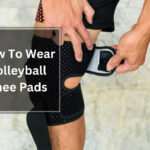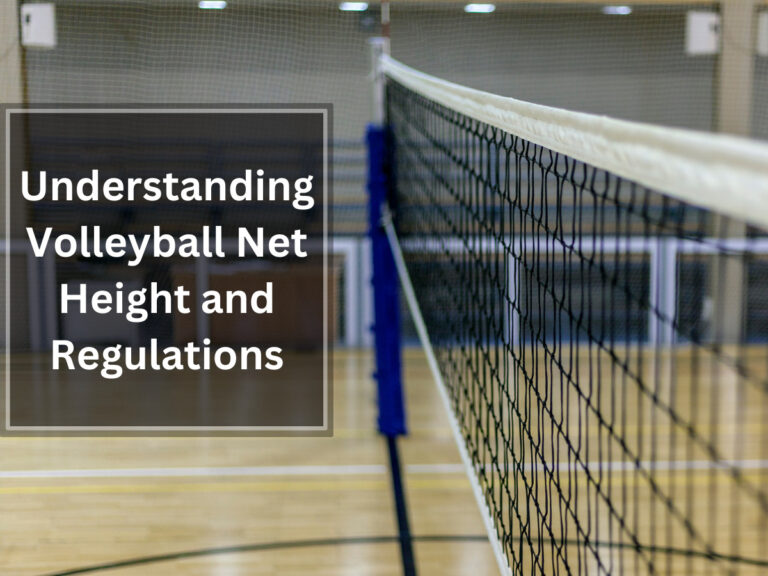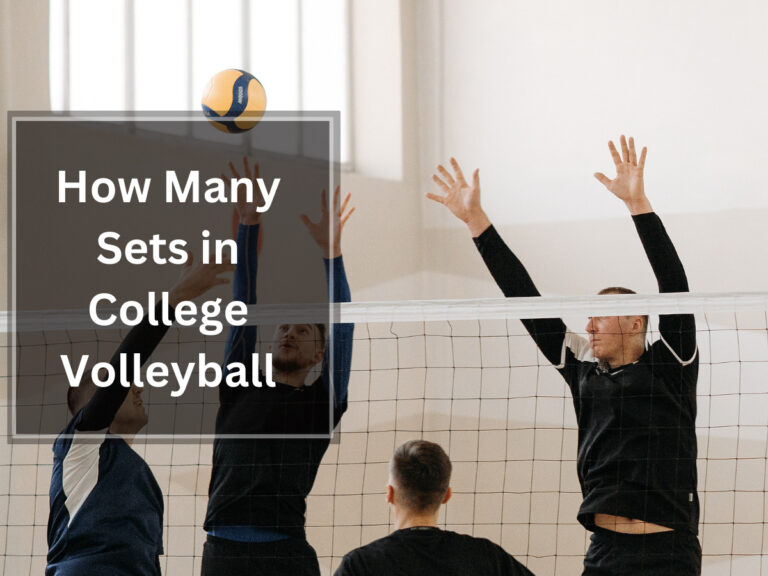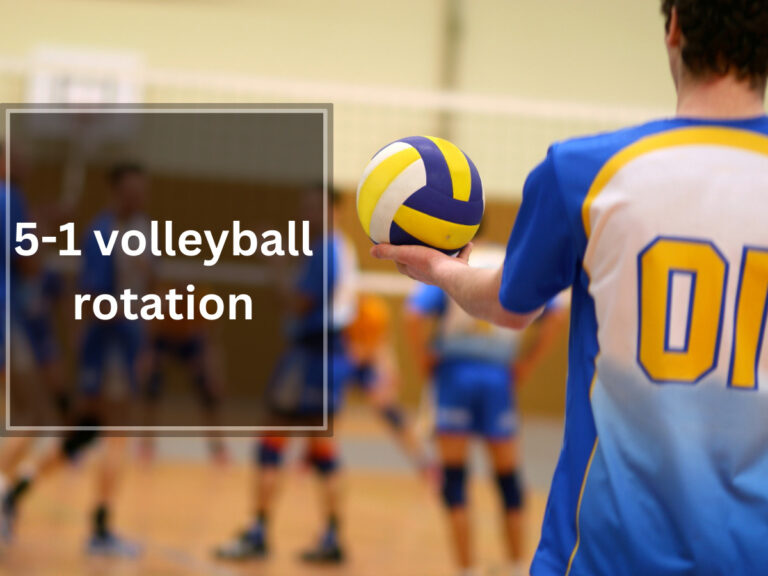Bruising From Volleyball – Causes, Treatment, and Prevention
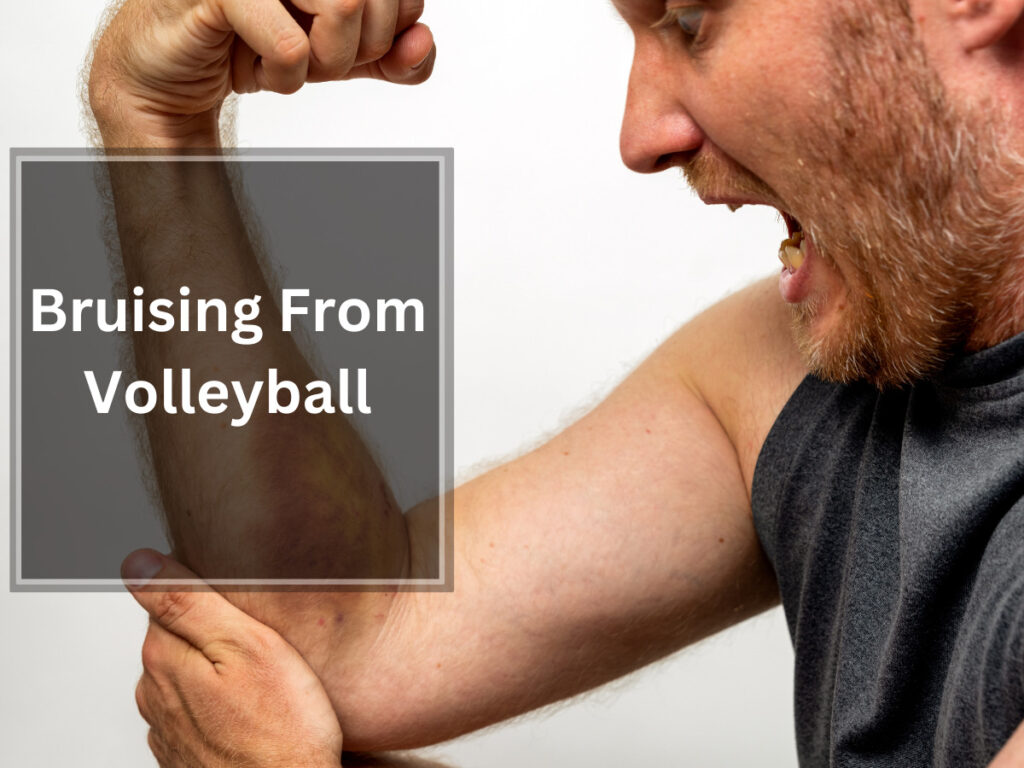
Do you love the thrill of diving for a ball or spiking it over the net in a fierce volleyball match? Well, as exhilarating as the game may be, it can also leave its mark on your arms. Arm bruises are like battle scars that show your dedication to the sport.
But don’t worry, there are ways to treat and prevent these pesky bruises so you can keep dominating the court. Let’s dive into the world of bruising from volleyball and discover how to keep your arms in top shape.
What is a Bruise?
In volleyball, bruises can occur as a result of repeated contact with the ball during various aspects of the game, such as passing or blocking. The speed and impact of the volleyball can crush muscle fibers and connective tissue under the skin, leading to bruising.
While bruises can appear anywhere on the arms, they are most commonly found on the inside of the forearms due to actions like diving for loose balls or jumping for blocks.
How do bruises occur in volleyball?
To understand how bruises occur in volleyball, you need to consider the repeated contact with the ball during different actions, such as passing, receiving serves, or blocking. The force and speed of the volleyball can crush the muscle fibers and connective tissue under the skin, resulting in bruises.
Here are three key factors that contribute to forearm bruises from volleyball:
Impact: When players pass or receive serves, they often use their forearms to make contact with the ball. The force of this impact can cause bruising on the inside of the forearms.
Blocking: Volleyball players frequently jump and extend their arms to block incoming shots from opponents. This action exposes their wrists to potential bruising as they make contact with the ball.
Diving: During intense gameplay, players may dive for loose balls or attempt spectacular saves. These diving movements can lead to bruises on various parts of their arms when they hit the floor or collide with other players.
Understanding how these actions contribute to arm bruising is important for both preventing and treating injuries in volleyball players.
Common areas for volleyball bruises
When playing volleyball, you may notice bruises appearing on the inside of your forearms, as this area is commonly affected by the repeated contact with the ball. The impact of the volleyball hitting your arms can cause small vessels to rupture, resulting in skin discoloration and bruising.
In addition to the forearms, other areas prone to bruising in volleyball include the knees and wrists. Diving for loose balls or sliding on the floor can lead to bruises on the knees, while blocking or spiking can put strain on the wrists and result in bruising.
It’s important to take preventive measures such as using protective equipment like knee pads and wrist taping to minimize the risk of bruises. Additionally, strengthening your muscles through conditioning exercises can help absorb some of the impact from playing volleyball and reduce bruising.
Symptoms of a volleyball bruise
Arm bruises in volleyball can cause a range of symptoms that can impact your performance on the court. You may experience pain, swelling, bruising, tenderness, and limited range of motion in the affected area. These symptoms are typically a result of direct impact or trauma to the arm during gameplay.
Pain
If you experience pain from arm bruises in volleyball, it is important to seek medical attention to ensure proper treatment and prevent further complications.
Here are three important things to know about managing pain from arm bruises:
Treat the pain: To alleviate discomfort, you can use over-the-counter pain relievers . These medications can help reduce swelling and inflammation associated with arm bruises.
Apply cold therapy: Applying ice packs or cold compresses to the bruised area can help numb the pain and reduce swelling. Remember to wrap the ice pack in a cloth before applying it directly to your skin to avoid frostbite.
Rest and elevate: Giving your arm proper rest is crucial for healing and reducing pain. Avoid activities that aggravate the bruised area, and keep your arm elevated whenever possible to improve blood flow and alleviate swelling.
Swelling
Swelling in your affected arm can be reduced by applying ice and elevating it.
When playing volleyball, bruising and swelling in the arms are common due to the repeated impact of the ball. This can lead to discomfort, pain, and restricted movement, affecting your performance on the court.
To prevent or minimize swelling, you may consider using volleyball arm sleeves. These sleeves provide compression and support to the muscles, helping to reduce swelling and promote blood circulation.
Additionally, proper warm-up exercises before playing can help prepare your muscles for activity and decrease the chances of experiencing excessive swelling.
If you notice red dots on your arm along with swelling, it’s important to seek medical attention as this may be a sign of a more serious injury.
Remember to take care of your body and listen to any warning signs during gameplay to ensure optimal performance and freedom from injuries.
Bruising
Now that we’ve discussed swelling in volleyball injuries, let’s move on to another common issue: bruising.
Bruises on the arm can occur when you make contact with a fast-moving ball or collide with another player during gameplay. Here are three key points to understand about arm bruising in volleyball:
Impact from fast-moving balls: When the volleyball makes forceful contact with your arm, it can crush muscle fibers and connective tissue under the skin, leading to bruises.
Collisions with other players: Accidental collisions during gameplay can also cause bruising on your arms. The force of impact from these collisions can damage small vessels beneath the skin, resulting in discoloration and bruising.
Location of bruises: While bruises can appear anywhere on your arms, they are most commonly found on the inside of the forearms due to repeated contact with the ball during passing, receiving serves, or blocking.
Understanding how these bruises occur is essential for taking preventive measures and properly managing them if they do happen.
Tenderness
When your arm is tender to the touch, it can be a sign of a bruise or injury from playing volleyball.
In volleyball, the repeated contact with the ball during passing, receiving serves, and blocking can lead to bruises on your arms. The speed and impact of the volleyball can crush the muscle fibers and connective tissue under your skin, causing pain and tenderness.
Bruises in volleyball are most common on the inside of the forearms due to diving for loose balls, jumping for blocks, and spiking. The force of the volleyball damages small vessels beneath your skin, resulting in skin discoloration.
If you experience tenderness in your arm after playing volleyball, it is important to take proper measures such as applying ice and seeking medical attention if necessary to aid in recovery and prevent further injury.
Limited Range of Motion
To improve your limited range of motion in your arm, try performing gentle stretching exercises and gradually increasing the intensity over time. This will help to increase flexibility and reduce stiffness in the affected area.
Here are three effective strategies to enhance your range of motion:
1) Start with simple stretches: Begin by gently stretching your arm muscles, focusing on the areas that have limited mobility. Hold each stretch for about 15-30 seconds and remember to breathe deeply throughout.
2) Progress to dynamic stretches: Once you feel comfortable with static stretches, incorporate dynamic movements into your routine. This can include arm circles, wrist rotations, or reaching exercises that mimic volleyball actions.
3) Gradually increase intensity: As you become more flexible, gradually increase the intensity of your stretches by holding them for longer durations or adding resistance through bands or weights. However, always listen to your body and avoid pushing yourself too hard to prevent injury.
Treatment for a volleyball bruise
When it comes to treating arm bruises in volleyball, there are several effective strategies you can try.
RICE therapy, which stands for rest, ice, compression, and elevation, is a popular method for reducing swelling and promoting healing.
You can also consider using over-the-counter pain relievers to manage discomfort and inflammation.
Additionally, wearing a compression sleeve or wrap can provide support and help prevent further injury while allowing your arm to heal.
RICE therapy (rest, ice, compression, elevation
If you experience arm bruises from volleyball, try using the RICE therapy method (rest, ice, compression, elevation) to aid in the treatment and recovery process. Here’s how it works:
Rest: Take a break from playing volleyball to allow your body time to heal. Avoid any activities that put strain on your bruised arm.
Ice: Apply an ice pack or cold compress to the bruised area for 15-20 minutes at a time, several times a day. This will help reduce swelling and alleviate pain.
Compression: Use a compression bandage or wrap around the bruised arm to provide support and reduce swelling.
Elevation: Keep your arm elevated above heart level as much as possible. This helps promote blood flow and reduces swelling.
Following these steps can help speed up the healing process and get you back on the court feeling better in no time.
Over-the-counter pain relievers
Now that you understand the importance of RICE therapy in treating arm bruises from volleyball, let’s explore another helpful option: over-the-counter pain relievers.
When dealing with the discomfort and inflammation associated with arm bruises, these medications can provide relief and aid in your recovery process.
Over-the-counter pain relievers such as ibuprofen or acetaminophen can help manage the pain caused by arm bruises. These medications work by reducing inflammation and blocking pain signals to alleviate discomfort. It is important to follow the recommended dosage guidelines provided on the packaging and consult a healthcare professional if you have any concerns or questions.
Remember, while over-the-counter pain relievers can be effective for temporary relief, they should not replace proper medical advice or treatment. If your arm bruise is severe, does not improve with self-care measures, or is accompanied by concerning symptoms, it is essential to seek medical attention for further evaluation and guidance.
Compression sleeve or wrap
Using a compression sleeve or wrap can help reduce swelling and support the healing process of arm bruises in volleyball players. Here are three reasons why you should consider using a compression sleeve or wrap:
Decreased Swelling: Compression sleeves or wraps apply gentle pressure to the affected area, helping to reduce swelling by preventing fluid buildup. This can alleviate discomfort and promote faster healing.
Enhanced Blood Flow: By compressing the injured area, compression sleeves or wraps improve blood circulation, which is essential for delivering oxygen and nutrients necessary for tissue repair. Improved blood flow can also aid in removing waste products from the bruised area.
Added Support: The tight fit of compression sleeves or wraps provides additional support to the muscles and tissues surrounding the bruise, helping to minimize further injury and promote stability during volleyball activities.
Prevention of volleyball bruises
To prevent arm bruises in volleyball, it’s important to wear proper protective gear. This includes elbow pads, forearm guards, and gloves. These items can cushion the impact of the ball and protect your arms from bruising.
Additionally, it’s crucial to warm up before playing. This prepares your muscles for the demands of the game and helps prevent injuries. After playing, be sure to stretch. This promotes flexibility and prevents muscle tightness.
Lastly, try to avoid diving for balls whenever possible. Diving can lead to direct impact and increase the risk of arm bruising.
Wear proper protective gear
Wearing the appropriate protective gear, such as elbow pads and forearm guards, can help prevent arm bruises in volleyball. Here are three reasons why investing in proper protective gear is essential:
Cushioning Impact: Elbow pads and forearm guards provide an extra layer of padding to absorb the force of the volleyball, reducing the risk of bruising. The cushioning effect helps distribute impact evenly across the surface area, minimizing the chances of muscle fiber damage.
Enhanced Protection: Protective gear acts as a physical barrier between your arms and potential sources of injury. They shield your skin from direct contact with fast-moving balls or collisions with other players, decreasing the likelihood of developing bruises.
Confidence Boost: Wearing protective gear instills confidence in your gameplay by alleviating concerns about potential injuries. With reduced fear of getting hurt, you can focus more on your performance and fully engage in the game.
Warm up before playing
Before playing, make sure you warm up properly to prepare your body for the demands of the game and reduce the risk of injuries. Warming up is crucial in volleyball because it increases blood flow to your muscles, improves flexibility, and enhances your overall performance.
Start with some light cardio exercises like jogging or jumping jacks to get your heart rate up and loosen up your joints. Then, move on to dynamic stretches that target key muscle groups used in volleyball, such as arm swings, leg swings, and lunges. It’s also important to incorporate specific movements like blocking jumps or hitting motions into your warm-up routine.
Stretch after playing
Stretching after playing can help alleviate muscle soreness and improve flexibility, aiding in the recovery process. Here are three reasons why stretching is essential for volleyball players:
Reduces Muscle Soreness: Stretching helps to increase blood flow to your muscles, promoting the removal of metabolic waste and reducing post-game muscle soreness. It also improves circulation, delivering oxygen and nutrients to your muscles for faster recovery.
Improves Flexibility: Regular stretching increases joint range of motion, allowing you to move more freely on the court. Improved flexibility enhances agility and helps prevent injuries by ensuring that your muscles can handle sudden movements without strain.
Enhances Recovery: Stretching after playing relaxes your muscles, reducing tension and promoting a quicker recovery process. It also aids in preventing future injuries by maintaining muscle balance and improving overall body alignment.
Avoid diving for balls
When diving for balls, be mindful of the impact it may have on your arms and try to avoid it if possible. Diving is a common technique in volleyball to save the ball from hitting the ground. However, it can put significant strain on your arms, leading to potential bruises and injuries.
The force of hitting the floor or landing awkwardly can cause trauma to your muscles and blood vessels, resulting in painful bruises. To prevent this, focus on improving your agility and footwork so that you can move quickly without having to dive as often.
Additionally, practicing proper technique for receiving passes can help reduce the need for diving altogether. Remember to prioritize your safety and well-being while enjoying the freedom of playing volleyball.
Frequently Asked Questions
How Long Does It Take for a Volleyball Bruise to Heal?
Volleyball bruises can take varying amounts of time to heal depending on the severity. Mild bruises may heal within a few days to a week, while more severe ones can take several weeks. Rest and proper care are crucial for faster healing.
Can a Volleyball Bruise Cause Long-Term Damage?
Yes, a volleyball bruise can cause long-term damage if not properly treated. It’s important to seek medical attention for severe bruises or those that show no signs of improvement. Rest, ice, and gentle movement can aid in recovery.
Are There Any Specific Symptoms to Look Out for With a Volleyball Bruise?
Look out for symptoms like discoloration, pain, swelling, and restricted movement in a volleyball bruise. These can indicate more severe contusions. Seeking medical attention is crucial if symptoms worsen or persist.
What Are Some Effective Treatments for a Volleyball Bruise?
To effectively treat a volleyball bruise, you can follow the R.I.C.E method: Rest, Ice, Compression, and Elevation. Over-the-counter pain relievers can help manage discomfort. Gentle movement and stretching exercises aid in restoring flexibility and range of motion. Seeking medical attention is crucial for severe bruises.
Are There Any Specific Preventive Measures That Can Be Taken to Avoid Volleyball Bruises?
To prevent volleyball bruises, you can wear protective gear like elbow pads and forearm guards. Additionally, focus on proper technique and conditioning your muscles to absorb impact. Communicate with teammates to avoid collisions.


